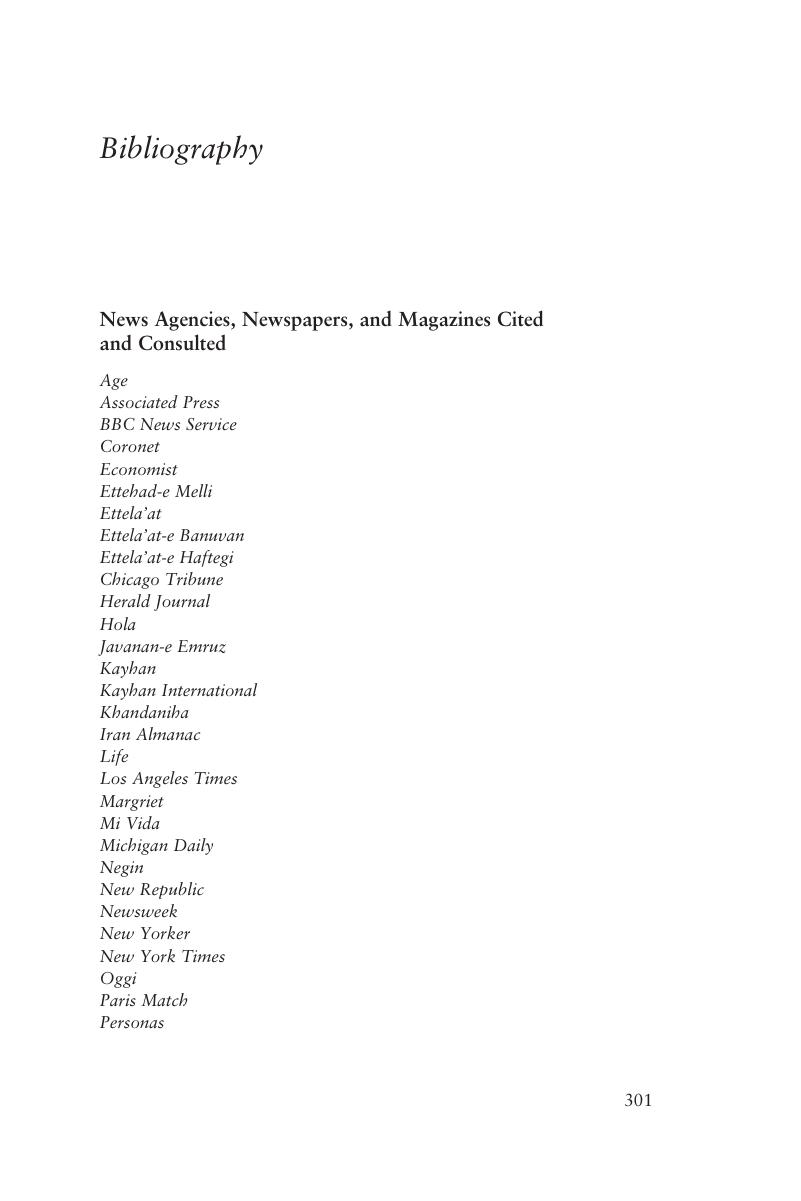Book contents
Bibliography
Published online by Cambridge University Press: 17 October 2019
Summary

- Type
- Chapter
- Information
- Creating the Modern Iranian WomanPopular Culture between Two Revolutions, pp. 301 - 322Publisher: Cambridge University PressPrint publication year: 2019

